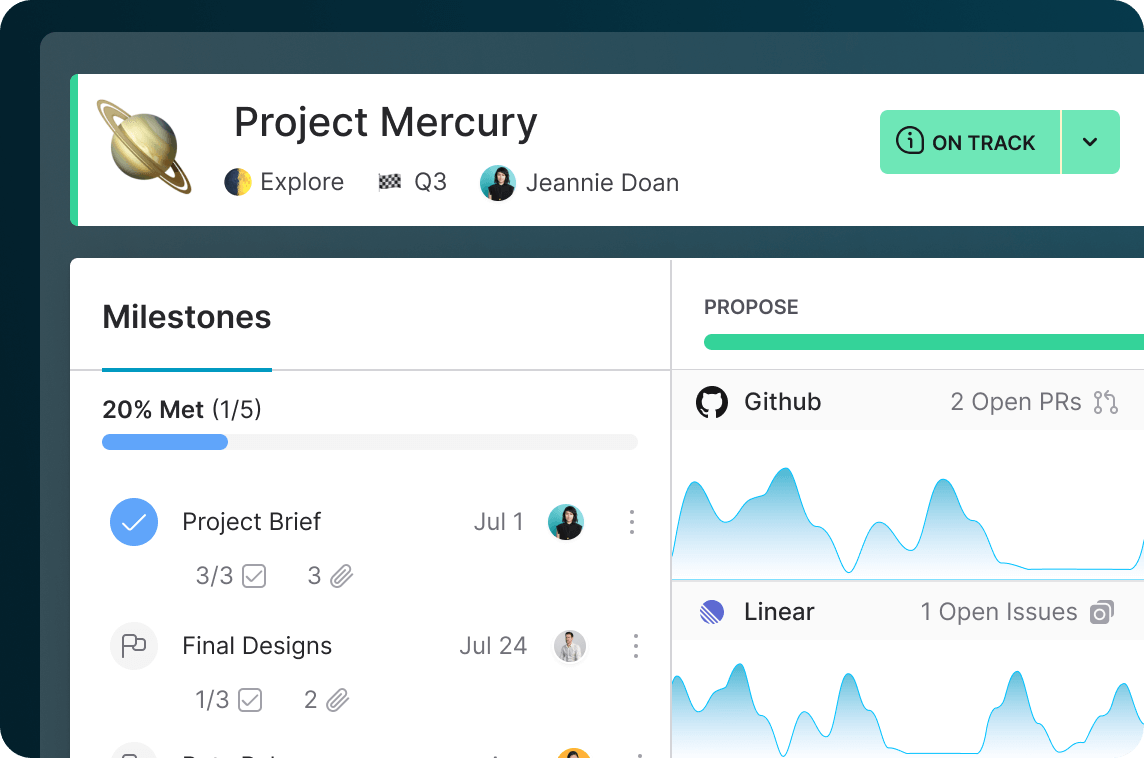Debug Teams
Every engineering team has a project management tool, so why can’t they easily answer these 5 questions?

April 2023
- How’s it going?
- Who’s working on it?
- How can I help?
- What are the critical discussions to be had & decisions to be made?
- Why does it matter?
There have never been more tools, metrics, task/activity/issue trackers, performance frameworks, and data at the disposal of engineering leaders, TPMs, and delivery managers, yet when key stakeholders want answers to any of the questions above the most frequent response is “Let me get back to you” followed by a series of slack pings, status check-ins, quick sync meetings, and a frantic search across tools, threads, and artifacts for any indications of progress.
To achieve alignment up, down, and across the team, this ad hoc cycle repeats itself as many times as necessary. More often than not, the task falls to project owners, TPMs, and Delivery Managers to brute force their way past the many shortcomings of their existing project management tools in order to provide answers. Unfortunately, servicing each request is not a write-once-send-to-many operation. It’s often a custom response, manually curated to the unique needs of the individual making the request. Worse yet, the information gets stale fast. And while activity data from various tools can help piece together some indication of where things are at since the last check-in, the truth most often lies in the human context (e.g., decisions, demos, discussions, escalations, etc.) that gets buried in email, slack threads, and documents.
Complicating things further is the rapidly evolving nature of how and where work gets done. Fast-moving engineering teams are more autonomous, distributed, asynchronous, and in this macro environment, resource-constrained than ever before. Updates are no longer a shoulder tap away…not that anyone liked that tactic anyway. And engineering teams can no longer afford to keep adding TPMs to try and close the information gap caused by project management tools designed for a different era.
As projects, and the people working on them, get further dispersed across a widening combination of locations, time zones, and tools, there needs to be a better way, a modernized approach to project management designed for the realities of today's engineering organizations. In other words, Project Management Without The Management.
Modern project management solutions sit above the activity/issue/task tracking tools you have in place today, combining data and human inputs together to deliver the four highest value aspects of project management in a single platform:
- Automated Status
- Real-Time Visibility
- Critical Human Context
- Goal-Project-Work Alignment
Most importantly, they do it without the tedious coordination overhead required to obtain, maintain, and communicate the same information from other tools, systems, and processes. Less disruptions, check-in meetings, rework, and double entry status bookkeeping.
For the project owners and project managers in your organization including Engineering leaders, Technical Program Management and Delivery teams, a project management tool should be the single source of truth for answering the most frequently asked questions of any project or initiative. Pulling from your preferred tools, including existing project management tools, task managers, and issues trackers, a modern project management platform combines work activity data, artifacts, and critical human context into a central hub of progress that increases visibility, accelerates alignment, and improves decision-making. Best of all, by supercharging your project management capabilities, your engineering team can get back to focusing on what matters most, building better software, faster.
Interested to see what modern product management looks like in action? Sign up for the KATA Early Access Program today.
Back to Blog
